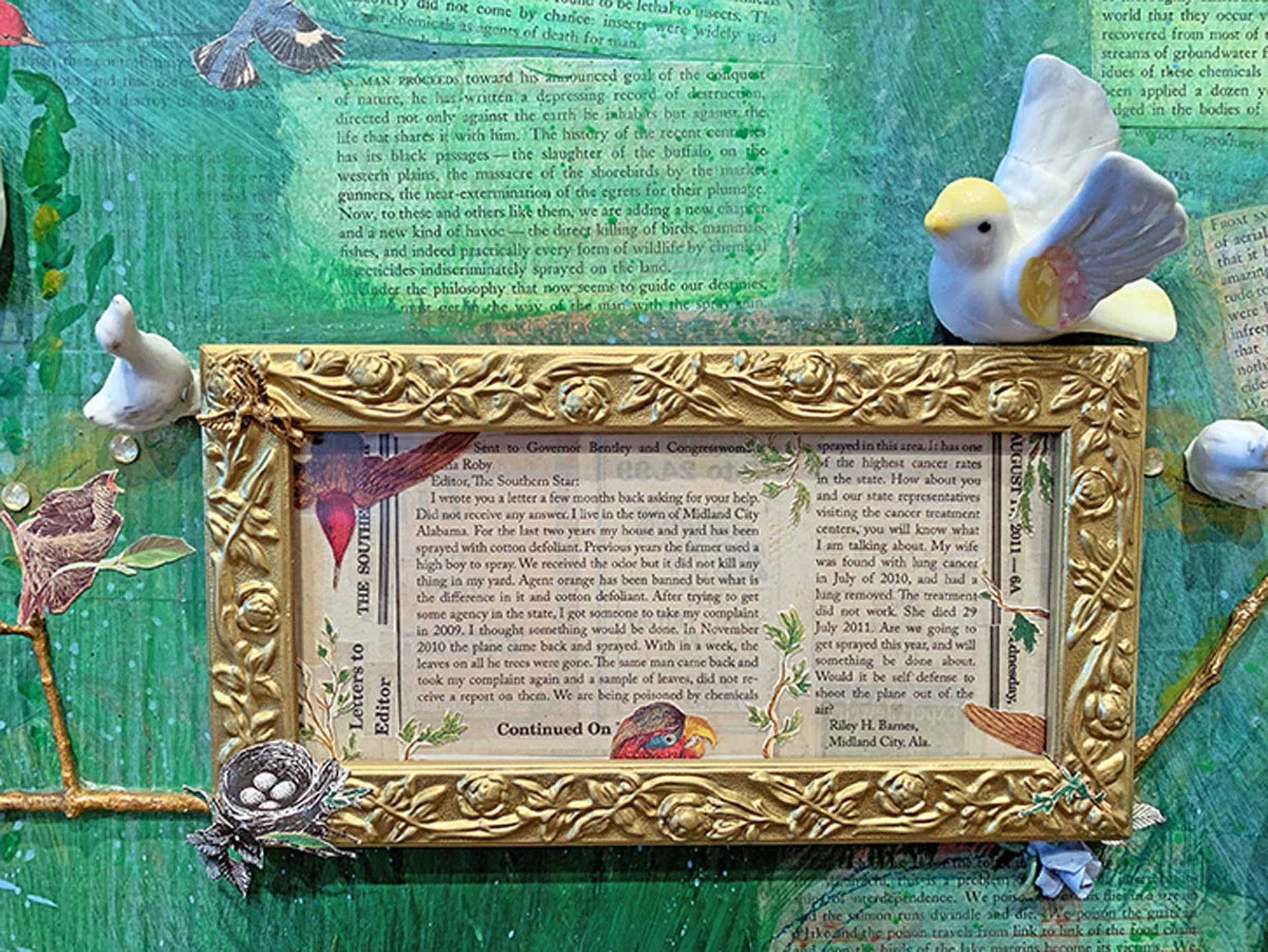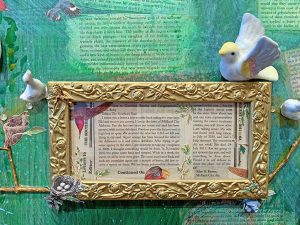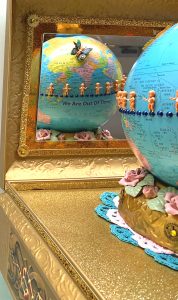
Artist Profile – Beverly West Leach
Beverly West Leach’s work is currently on display at WMA, in the exhibition Telling on Myself: Recent Works by Beverly West Leach. Due to the museum’s temporary closure, the exhibition has been extended through September 2020. Here she discusses her work in more detail.
What inspires you most?
Well, many things and topics inspire me, but what I always come back to is nature. Thinking about the interconnectedness of everything on the planet. Observing the tiniest bee on a flower in the summer or looking up to see the stars on a crystal-clear winter evening sky is inspiring. Waking early to catch the predawn hours of the sunrise which is never the same each day is inspiring. Watching quickly changing clouds roll by, seeing shades of blue transform in the sky overhead. Just being outdoors sparks many ideas for my work.
Travel has inspired my work too, experiencing different cultures and ideas about the human condition present in those cultures are embedded in my thinking. Traveling to art museums and viewing works of art is inspiring too!
As an artist and teacher, why do you think the arts are important?
The arts are what make us most human, most complete as people.
Today’s students are inundated with data but are starving for meaningful learning. Students need to be thinkers, possess people skills, be problem-solvers, demonstrate creativity, and work as a member of a team. The arts can offer more in-depth learning about the things that matter the most: integrity, a sense of wonder, flexibility, fairness, dignity, contribution, justice, creativity and cooperation. The arts provide all of these. Thinking skills are nurtured in studying art. The arts promote the understanding and sharing of culture. Also, the arts help a student to improve self-esteem and social skills.
Education in the arts is an integral part of the development of each human being. Those who have studied learning processes throughout the ages, beginning with Plato, have emphasized the importance of the arts in the education process. Study in the arts is integral to our society. Arts learning experiences contribute to the development of certain thinking, social and motivational skills that are considered basic for success in school, work and life.
There is a quote by the American painter Georgia O’Keeffe that has resonated with me for several decades now and it sums up why I think art (and the arts in general) are important – “I found I could say things with color and shapes that I couldn’t say any other way – things I had no words for.”
You grew up in New York state – how has living in the South shaped your creative process?
As a child I grew up in a small-town way upstate in NY and then lived in Ohio, Pennsylvania and later in Baltimore for 20 years, coming to Ozark, AL in 2007 as a full-fledged 48-year-old adult. So, I think there are two things at play in my artistic development coming to the south: one, the stage of life I am in now affords me the ability to reflect back on my life experiences and make connections that my younger self would not have been able to do and two, living again in a small town surrounded by nature, experiencing being outdoors everyday like I did in childhood. Moving to the south reconnected me to the natural world.
Also, there was a strong source of inspiration from going to Sadie’s Flea Market just south of the Peanut Festival fairgrounds. The wide variety of people, animals, food and the knick-knacks by the ton sparked ideas. The piles of things on tables made for mini compositions in my camera lens and these juxtapositions of objects brought to mind my childhood, my grandmothers and their collections of things. I just started collecting what caught my eye and what seemed related to my interests, for instance birds. So, I began weekly hunts at the flea market and then to thrift stores to find just the right objects as I cultivated ideas to create my assemblages.
Storytelling is a prominent art form in the south and this has had an influence too. As my collection of objects grew the connection I made to stories I could express in my art by using those objects grew.
How do you select subject matter?
Sometimes deliberately and sometimes spontaneously by just messing around with bits and pieces laying around my studio. Usually there is a vague idea like transition, metamorphosis, or the cycle of life and then I start making whatever it is I am about to make.
Sometimes a piece begins with something I have read, an article, a poem, a news report, or novel. Once an idea takes hold I’ll do research on it if I think I need to know more thus helping me understand what I am about to embark on making.
In Altarpiece for Rachael and Mrs. Barnes the subject matter started with my interest in the important book Silent Spring by Rachel Carson and my collection of ceramic birds. A few weeks after I had started this piece I read an editorial letter sent in to my local paper The Southern Star and I wept as I read the letter from Mr. Barnes about the loss of his wife to cancer and his frustration with the overhead spraying of defoliant chemicals on the cotton fields near his home in Midland city. This connection made me turn my attention to making the piece a memorial to both women and as something more akin to an actual altarpiece. The subject matter in this piece is complex, it is about protecting Mother Earth, but also celebrating two women and my own personal history becomes part of the subject matter by using images of nature from my home town.
Subject matter can be chosen just from my everyday life as well, I am a beekeeper and the honeybees often become the subject. The things around me can easily become subject matter. Recently I have been making collages and that process of collecting a wide assortment of images makes for a limitless resource of subject matter.
What impact do you hope your work will have on visitors to “Telling on Myself” at WMA?
Perhaps the viewer will become more aware of how their actions towards nature affect the whole, considering how important it is to conserve the precious resources of our planet for the future of our grandchildren. That the time we are given is fleeting and ever changing so be open to connections that are whimsical, or profound, or unexpected, or clearly planned and be open to experiencing new meaning. To take pause and reflect on what is important to them and come to realize they, like all of us, have a story to tell.
View More Stories


